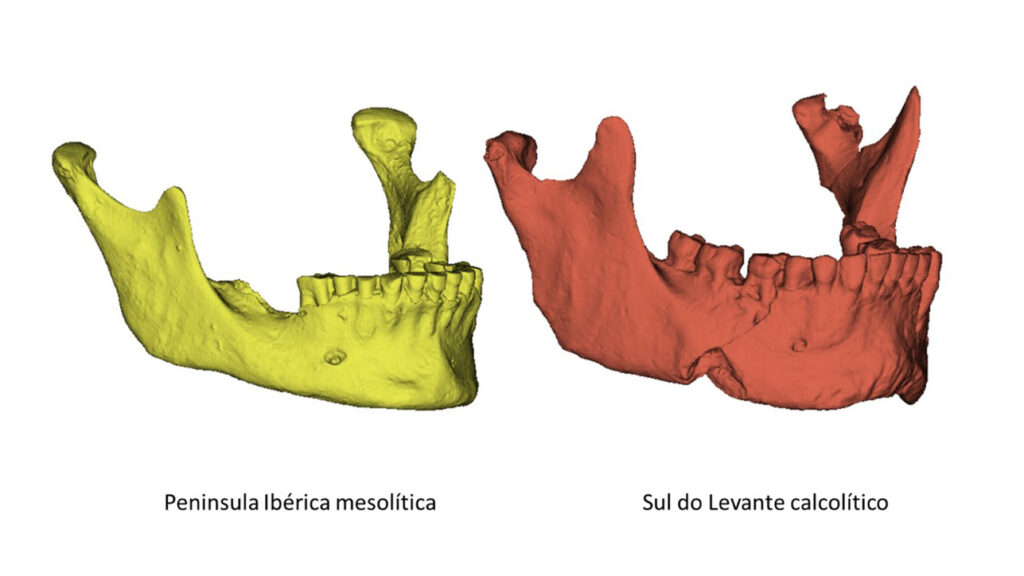Ricardo Miguel Godinho, researcher at the Interdisciplinary Center for Archeology and Evolution of Human Behavior (ICArEHB) at the University of Algarve, led an international team of researchers from Portugal and Israel who studied the jaws of people who lived between the Mesolithic and Chalcolithic periods, including the period in which agriculture was introduced, in the current territories of Portugal and Israel.
Researchers who have been studying the invention and spread of agriculture for a long time have analyzed the influence that the consumption of cereals and more processed foods has had on the shape of our faces, as well as on many other problems that we currently suffer from.
For example, eating softer foods with lots of carbohydrates appears to result in crowded teeth and the formation of cavities. However, a recent study, published in Nature Scientific Reports, suggests that what people ate is less important to the shape of their faces than their ancestry.
«For much of our evolutionary history we were hunters and gatherers. The invention of agriculture and pastoralism in the Near East, approximately 10000 years before our era, provided a new form of subsistence and new foods for consumption. Researchers can detect these dietary changes by studying, for example, tooth wear, chemical analyzes of diet-related isotopes, and metagenomic analyzes of dental tartar. The shift to a mostly agricultural diet also had an impact on the shape of the bones in our chewing apparatus (the jaws). Bone is a dynamic and plastic tissue that adapts to mechanical loads, and with the introduction of more processed foods, jaws have become smaller and more graceful», says the University of Algarve (UAlg).
Genetic studies demonstrate that the migratory populations that spread agriculture across Europe replaced and also mixed with pre-existing local hunter-gatherer populations, having had common descent.
Around 5500 BC, agro-pastoral populations arrived on the Iberian Peninsula, but, says Ricardo Miguel Godinho, co-coordinator of the Osteoarchaeology laboratory at ICArEHB and main author of the article, «despite many previous studies, there is still a lot that we don't know , how this major population transition and lifestyle impacted the Iberian population, including the shape of their faces».
In addition to conventional approaches to examining, for example, tooth wear, the team also used digital techniques to study jaw morphology.
These techniques are fundamental because they allow for the objective reconstruction of archaeological specimens (which are often fragmented and distorted), as well as a much more detailed analysis of differences in shape. These techniques included digitizing specimens through CT and surface scanning, and using computer programs for 3D visualization and data collection and analysis. This approach made it possible to analyze whether there are actually differences in mandibular morphology between populations and what could explain such hypothetical differences.
The results of this multi-year study demonstrate that the differences in form that exist between these Mesolithic, Neolithic and Chalcolithic populations result, for the most part, from differences in population history.
“Our results are consistent with previous studies of ancient DNA that show differences between Iberian Mesolithic populations and those originating in the southern Levant. But more importantly, our results show that the shape of the jaws of these people who lived in the transition from the Mesolithic to the Neolithic in the Iberian Peninsula is largely due to population history and ancestry. Diet certainly has an impact, but it is much smaller than population structure,” says Patricia Smith, from the University of Jerusalem and senior author of the article.
This study, available here in open access and funded by the Foundation for Science and Technology and the University of Jerusalem (through the Synthesys+ program), will continue to analyze the impact of the transition from Mesolithic hunter-gatherer subsistence to Neolithic agro-pastoralism, including more collections of other regions.



















Comments